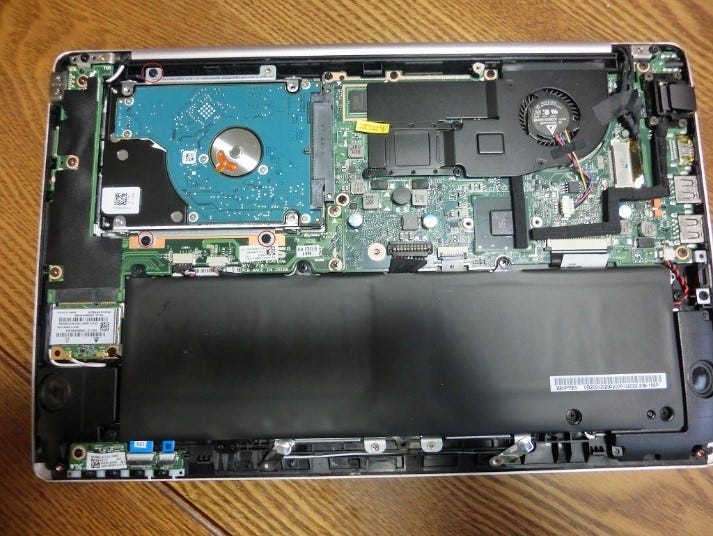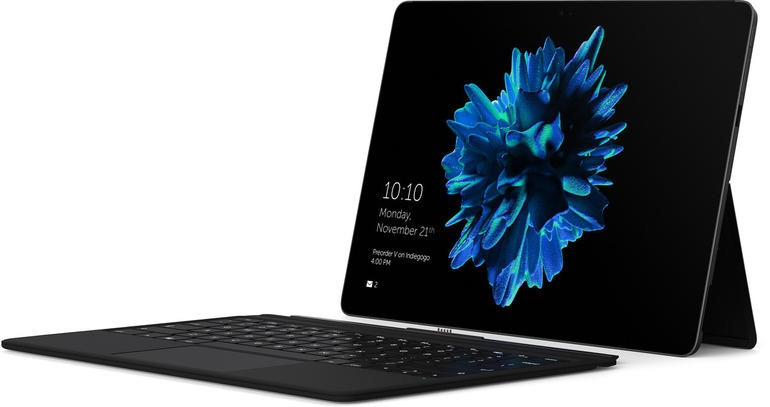Technological Anorexia
Click to read the full story: Technological Anorexia

Tech companies have been pushing the envelope for thinness for years. Supposedly, the thinner a device is, the lighter it gets and becomes more mobile. It’s a great factor when it comes to buying Wintel laptops, Chromebooks and MacBooks. It’s also the same thing when it comes to mobile phones and tablets. But how thin is too thin? Oftentimes, thinness in devices opens the device and consumers to several compromises that can hurt both consumers and the products.
For younger readers, it would be fun for you to look back, chuckle and laugh at how mobile your parents were and how happy our generation was with what we got back then. You’d be amazed at looking how cutting-edge old hardware was back then. Forget the laughable specs. Just look at their design. Lots of it on Pinterest or just Google images of old computers. Some people were actually happy to be able to take their luggable computers to and from work like the Osbourne portables. By today’s standards, those things weighed a ton. But even then, those devices had to make compromises like very small screens that are smaller than today’s phablets. Computers in the palm of your hand? You’d have to be from the Enterprise.

Fast forward in time to the present. Only the poorest who earn less than two dollars a day don’t have a computer in their hands. These computers are in the form of budget phones, laptops, smartphones, tablets and by now rare PDAs. Everyone is now mobile, and these small computers are now indispensable. Technology has come far in such a way that our gadgets can become small but still usable. No one in their right mind today would be carrying a portable like the Osborne just so they could tweet at a Starbucks.
But many tech companies want to keep taking their miniaturizations some steps further. Since they can’t shrink their screens on their phones, tablets and laptops, the way to go is to slim things down. I won’t be surprised when the day comes when laptop logic boards are as thin as sheets of plastic and that chips are practically drawn on them. There are already flexible concept screens that can be rolled out like paper. We wouldn’t mind such developments as long as they’re practical and not born out of one-upmanship between competitive tech giants.

There are disadvantages when rushing technology. You know, when things go wrong and end up being disastrous. Fictionally, there’s Jurassic Park, I Am Legend, Terminator: Rise of the Machines. Realistically, we have Samsung’s Galaxy Note 7. The result of the investigation was that Samsung got “aggressive” with their innovation. You can look at as either a positive or a negative but Samsung’s statement leans on “apologetically positive.” You can’t blame someone for trying to innovate, right? So what happened? In the process of packing in as much features as possible in the Galaxy Note’s case, they took a risk in giving the built-in battery claustrophobia. They knew there might be problems down the road, but they didn’t know how much smoke would be blown up their behinds.

Internal batteries are a necessity in keeping the device as slim as possible. The device can be thinner if you take out the battery housing. That’s a few grams of weight shaved off too. Better mobility. Many who don’t know better don’t mind, but those of us that do can only take it with a grain of salt. Internal batteries are difficult to replace for the average consumer and the practice forces obsolescence which is good for the manufacturer and as they say, is good for the modern economy.

We’re not saying thin is evil. Thin is a good thing if done correctly of course. Thin can be a necessity. I got out of a few scrapes because I’m slim. Thin and light are very important to mobility. This article was written on my trusty ASUS Vivobook X202E. It’s light, it’s thin, it’s mobile unlike my old heavy HP Compaq 8230 laptop. When I began my career as a writer, I wanted a smaller laptop like the netbooks that became popular before the iPad came out. The light weight of the Vivobook, it’s slim build, Windows 8 and especially its touch screen got me sold. It’s great except for three compromises. The ASUS Vivobook X202E RAM cannot be upgraded; the battery is built-in, and it had no optical drive. But it’s still quite useful, and down the line, I’ll be replacing it anyway.

The lack of RAM and lack of an optical drive hurts the laptop’s functionality somewhat, but it’s a USB, SD and cloud storage world. The Macbook Air convinced the world that it no longer needs optical drives in slim notebooks. Now that we’ve come to Apple, their obsession with thinness now borders on anorexia, but it’s the consumers who end up hungry. Forget the touch bar, the latest Macbook Pro did away with all types of ports except for Thunderbolt USB Type C. For some reason they even took away the already slim SD card slot but ironically kept a 3.5mm headphone jack. To further trim the laptop, they trimmed the keyboard keys making them akin to Surface Pro touch cover keys which many Pros didn’t like. Not feeling the keyboard would make a good hashtag. Many Mac fans are hurt by the port removals and unfortunately would have to dongle their way to use their old accessories, including their iPhones. The new Macbook Pro is a classic example of forcing form over function, when as a Pro device, it’s supposed to promote function.
Then there’s the iPhone 7 where Apple got a lot of flak and attention for its removal of the headphone jack. It’s a big deal to many as audiophiles aren’t content with Apple’s already good headphones. They want headphones with good bass and noise canceling features. Apple hurt the iPhone in order to scrape a few millimeters. Plus, users can’t charge and listen to music at the same time unless they use Bluetooth headsets. But, being a leader in innovation, Samsung is rumored to follow suit with the Samsung Galaxy S8. It’s a courageous new world with new purchases of adapters or Bluetooth headsets. So we go full-circle back to Samsung since the Samsung Galaxy Note 7 which was rushed out to pre-empt the iPhone 7 release, where the Note 7’s aggressive design is another word for not-so-well-thought-of.
Tech companies could follow the example of Helsinki startup Eve. Instead of slimming their Eve V hybrid, they put on a few grams for the sake of function and got plenty of attention.

Anyway, keeping slim doesn’t hurt as long as it’s healthy. Much like with our bodies. Being thin is no good if our health is compromised. Our gadgets may be thin and light, but if they don’t function correctly, they won’t even make good paperweights.
The post Technological Anorexia appeared first on Movie TV Tech Geeks News By: Marius Manuella
